#lynds dark nebula
Photo

Cosmic ghost: Dark nebula in Orion © marsrader
#nebula#space#nasa#astronomy#astrophotography#planet#universe#planets#cosmos#solar system#stars#night sky#galaxy#lynds dark nebula
5K notes
·
View notes
Photo
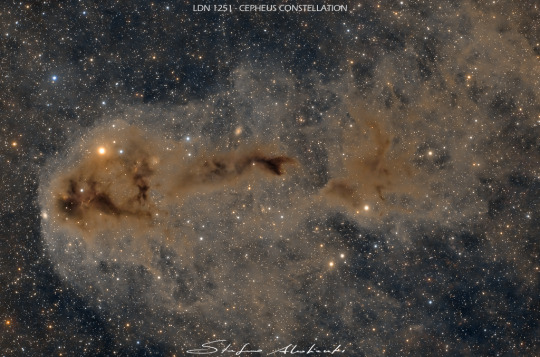
Lynds Dark Nebula 1251 #NASA https://ift.tt/BrHCtsy
0 notes
Text

Lynd's Dark Nebula (LDN 673)
#stars#nebula#celestial#cosmic#cosmos#the unknown#space#outer space#deep space#space dust#astrophotography#beautiful#beauty#escape#pretty#dark#spiritual#nature#darkness#mysterious#mystical#photography#astral#galactic#galaxies#gold#glowing#constellations#ldn 673#illuminated
411 notes
·
View notes
Text
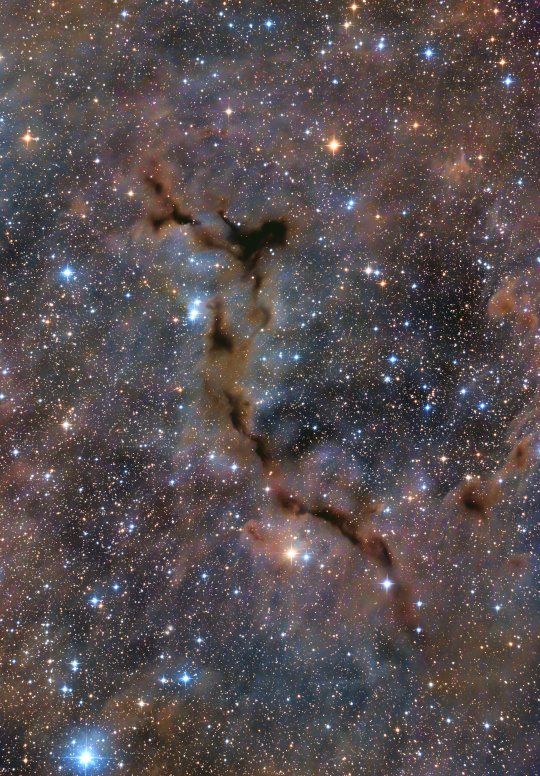


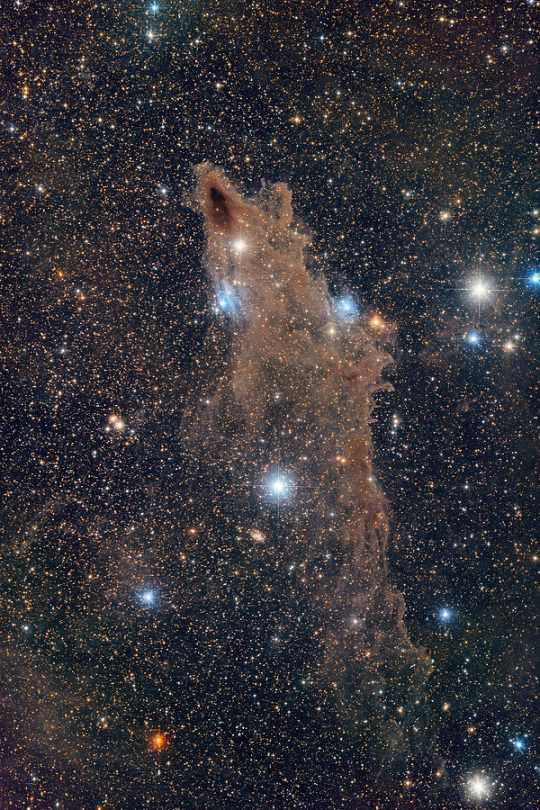
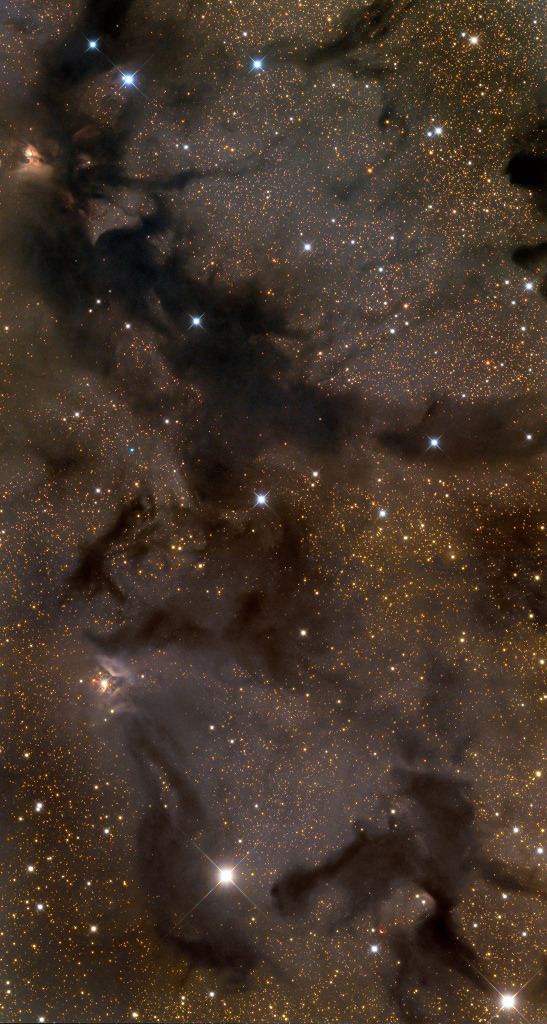
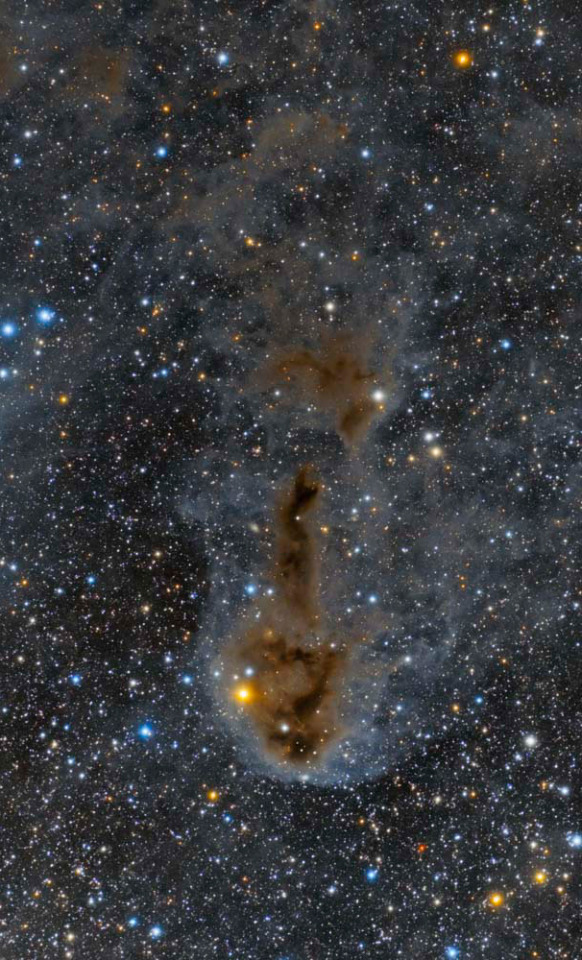
Lynds’ Dark Nebulae
l Shawn Nielsen l Aygen l JkbSahner l Reinhold Wittich l Adam Block l Astromet
#nebula#space#stars#night#sky#universe#solar system#planets#astrophotography#nasa#astronomy#galaxy#dark nebula
1K notes
·
View notes
Photo

Lynds Dark Nebula 1251
Credits: FrancescoSferlazza, Astro Brallo
55 notes
·
View notes
Photo

2023 June 14
The Shark Nebula
Image Credit & Copyright: Stephen Kennedy
Explanation: There is no sea on Earth large enough to contain the Shark nebula. This predator apparition poses us no danger as it is composed only of interstellar gas and dust. Dark dust like that featured here is somewhat like cigarette smoke and created in the cool atmospheres of giant stars. After being expelled with gas and gravitationally recondensing, massive stars may carve intricate structures into their birth cloud using their high energy light and fast stellar winds as sculpting tools. The heat they generate evaporates the murky molecular cloud as well as causing ambient hydrogen gas to disperse and glow red. During disintegration, we humans can enjoy imagining these great clouds as common icons, like we do for water clouds on Earth. Including smaller dust nebulae such as Lynds Dark Nebula 1235 and Van den Bergh 149 & 150, the Shark nebula spans about 15 light years and lies about 650 light years away toward the constellation of the King of Aethiopia (Cepheus).
∞ Source: apod.nasa.gov/apod/ap230614.html
104 notes
·
View notes
Photo

Lynds Dark Nebula : Stars are forming in Lynds Dark Nebula (LDN) 1251. About 1,000 light-years away and drifting above the plane of our Milky Way galaxy, the dusty molecular cloud is part of a complex of dark nebulae mapped toward the Cepheus flare region. Across the spectrum, astronomical explorations of the obscuring interstellar clouds reveal energetic shocks and outflows associated with newborn stars, including the telltale reddish glow from scattered Herbig-Haro objects hiding in the image. Distant background galaxies also lurk on the scene, almost buried behind the dusty expanse. This alluring view spans over two full moons on the sky, or 17 light-years at the estimated distance of LDN 1251. via NASA
444 notes
·
View notes
Photo
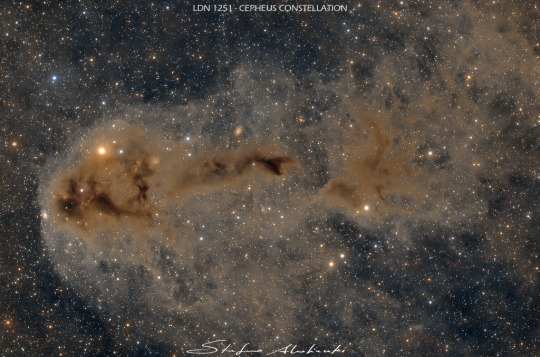
Lynds Dark Nebula 1251
via NASA https://ift.tt/ELJ3jrD
73 notes
·
View notes
Text
The Shark Nebula
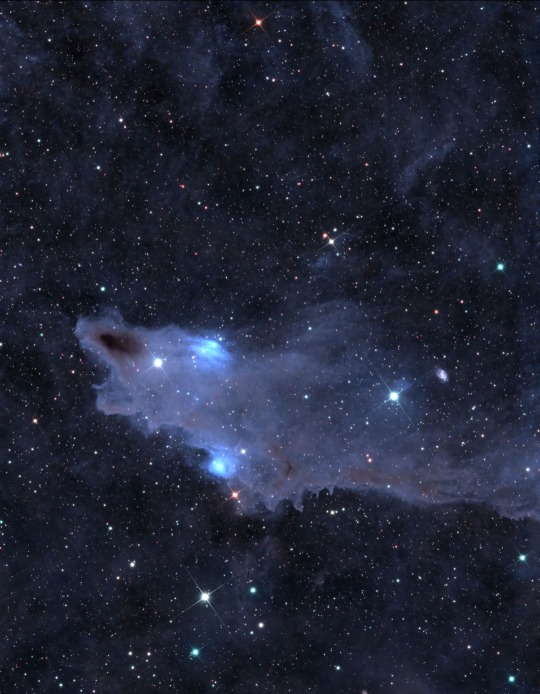
There is no sea on Earth large enough to contain the Shark nebula. This predator apparition poses us no danger as it is composed only of interstellar gas and dust. Dark dust like that featured here is somewhat like cigarette smoke and created in the cool atmospheres of giant stars. After being expelled with gas and gravitationally recondensing, massive stars may carve intricate structures into their birth cloud using their high energy light and fast stellar winds as sculpting tools. The heat they generate evaporates the murky molecular cloud as well as causing ambient hydrogen gas to disperse and glow red. During disintegration, we humans can enjoy imagining these great clouds as common icons, like we do for water clouds on Earth. Including smaller dust nebulae such as Lynds Dark Nebula 1235 and Van den Bergh 149 & 150, the Shark nebula spans about 15 light years and lies about 650 light years away toward the constellation of the King of Aethiopia (Cepheus).
Image Credit & Copyright: Stephen Kennedy
17 notes
·
View notes
Photo

The Boogey Man Nebula, AKA Lynds’ Dark Nebula (LDN) 1622)
It is located in the constellation Orion.
42 notes
·
View notes
Photo
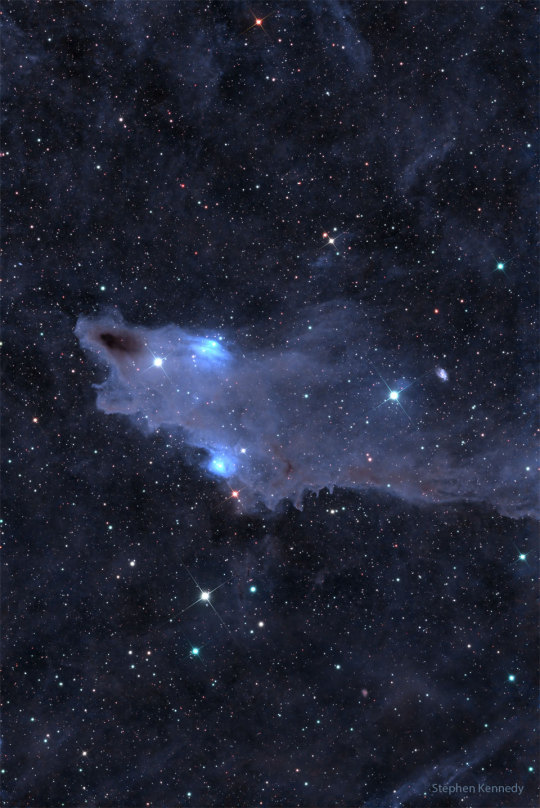
via NASA https://ift.tt/Zo13tuS There is no sea on Earth large enough to contain the Shark nebula. This predator apparition poses us no danger as it is composed only of interstellar gas and dust. Dark dust like that featured here is somewhat like cigarette smoke and created in the cool atmospheres of giant stars. After being expelled with gas and gravitationally recondensing, massive stars may carve intricate structures into their birth cloud using their high energy light and fast stellar winds as sculpting tools. The heat they generate evaporates the murky molecular cloud as well as causing ambient hydrogen gas to disperse and glow red. During disintegration, we humans can enjoy imagining these great clouds as common icons, like we do for water clouds on Earth. Including smaller dust nebulae such as Lynds Dark Nebula 1235 and Van den Bergh 149 & 150, the Shark nebula spans about 15 light years and lies about 650 light years away toward the constellation of the King of Aethiopia (Cepheus).
5 notes
·
View notes
Photo

LDN 1622: The Boogeyman Nebula - Joshua Carter
To some, the dark shape looks like a mythical boogeyman. Scientifically, Lynds' Dark Nebula (LDN) 1622 appears against a faint background of glowing hydrogen gas only visible in long telescopic exposures of the region. In contrast, the brighter reflection nebula vdB 62 is more easily seen just above and to the right of center in the featured image. LDN 1622 lies near the plane of our Milky Way Galaxy, close on the sky to Barnard's Loop, a large cloud surrounding the rich complex of emission nebulae found in the Belt and Sword of Orion. With swept-back outlines, the obscuring dust of LDN 1622 is thought to lie at a similar distance, perhaps 1,500 light-years away. At that distance, this 2-degree wide field of view would span about 60 light-years. Young stars do lie hidden within the dark expanse and have been revealed in Spitzer Space Telescope infrared images.
4 notes
·
View notes
Text
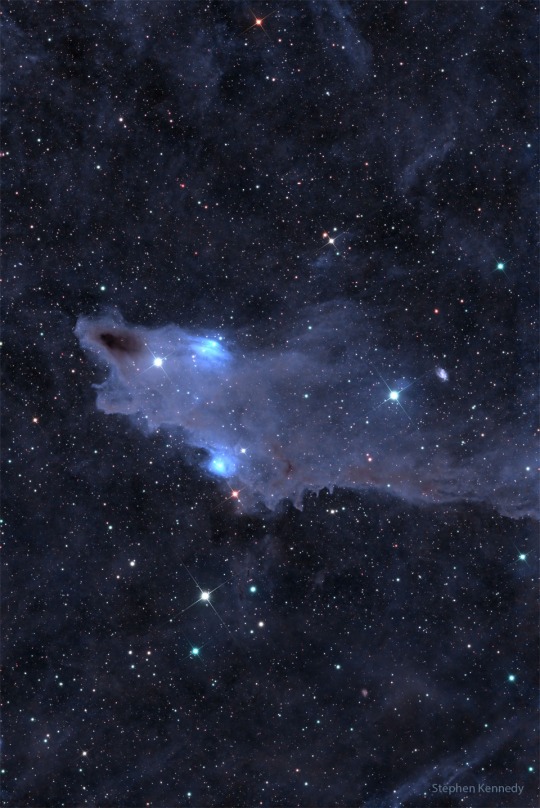
APOD: The Shark Nebula (6/14/23)
There is no sea on Earth large enough to contain the Shark nebula. This predator apparition poses us no danger as it is composed only of interstellar gas and dust. Dark dust like that featured here is somewhat like cigarette smoke and created in the cool atmospheres of giant stars. After being expelled with gas and gravitationally recondensing, massive stars may carve intricate structures into their birth cloud using their high energy light and fast stellar winds as sculpting tools. The heat they generate evaporates the murky molecular cloud as well as causing ambient hydrogen gas to disperse and glow red. During disintegration, we humans can enjoy imagining these great clouds as common icons, like we do for water clouds on Earth. Including smaller dust nebulae such as Lynds Dark Nebula 1235 and Van den Bergh 149 & 150, the Shark nebula spans about 15 light years and lies about 650 light years away toward the constellation of the King of Aethiopia (Cepheus).
©
Stephen Kennedy
0 notes
Text
To some, the dark shape looks like a mythical boogeyman. Scientifically, Lynds' Dark Nebula (LDN) 1622 appears against a faint background of glowing hydrogen gas only visible in long telescopic exposures of the region. In contrast, the brighter reflection nebula vdB 62 is more easily seen just above and to the right of center in the featured image. LDN 1622 lies near the plane of our Milky Way Galaxy, close on the sky to Barnard's Loop, a large cloud surrounding the rich complex of emission nebulae found in the Belt and Sword of Orion. With swept-back outlines, the obscuring dust of LDN 1622 is thought to lie at a similar distance, perhaps 1,500 light-years away. At that distance, this 2-degree wide field of view would span about 60 light-years. Young stars do lie hidden within the dark expanse and have been revealed in Spitzer Space Telescope infrared images.
📷: Joshua Carter
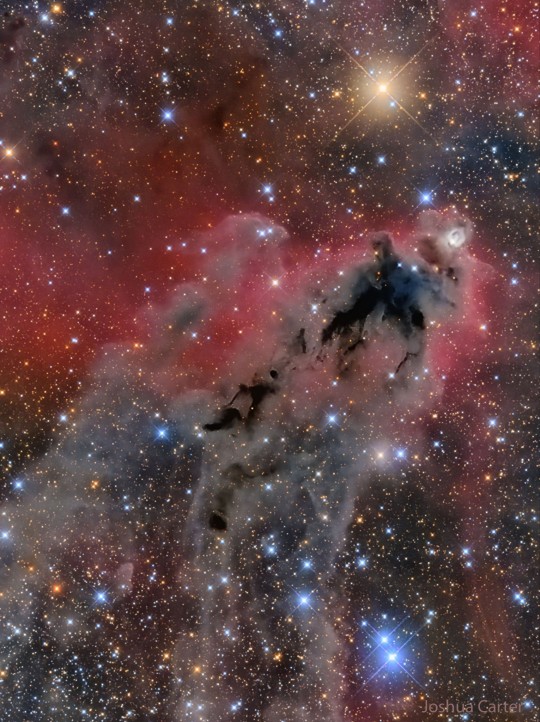
1 note
·
View note
Photo

Lynds Dark Nebula 183
Credits: Fabian Neyer
43 notes
·
View notes
